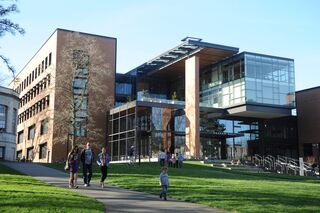Gender
Why Take Gender Studies Courses?
Exploring the impact and application of this line of inquiry.
Posted December 19, 2021 Reviewed by Gary Drevitch

Long before there was a field called gender studies, it was women's studies. Many college and university programs now are referred to as Women's and Gender Studies or Gender and Women's Studies, and some have the word Sexuality in the title also. It's crucial to remember this because the discipline emerged in the second wave of feminism. It was the academic arm of the women's movement. It was, and remains, radical to have a gynocentric lens.
As these programs have grown in popularity and evolved, they share some hallmarks. These include:
- Being interdisciplinary in scope.
- Valuing diversity in all its forms.
- Grappling with intersectionality—intellectually and experientially, in terms of multiple, intersecting identities such as race, class, sexuality, religion, dis/ability, etc.
- International in breadth and depth and with possible connections overseas to other programs.
- Cross-culturally informed.
- Grounded in classical and contemporary feminist theory and mindful of cutting-edge theory.
- Community-connected/activist-inspired.
- Cultivating service-learning opportunities, feminist-based internships, and work opportunities.
- Demonstrating the constant fusion of intellectual and emotional dimensions of knowledge building.
- Strengthening the alliance between Women’s and Gender Studies as an academic program with co-curricular activities.
- Embracing the way that Women’s and Gender Studies offers a potentially transformative analysis.
- Recognizing the opportunity to do work on masculinities and to think in more expansive ways about gender while still retaining a gynocentric lens.
- Embodied and aware/mindful of the whole person—drawing on a variety of traditions and practices to infuse academic life with a sense of greater mindfulness and embodiment and to instill more balance between work, play, creativity, and imagination.
For many people, it's new and liberating to teach and learn in gender studies and to finally acquire a meaningful language for grappling with experiences we know to be unequal but could not fully understand until that point. Gender studies gives language and voice to social inequalities, processes, conditions, arrangements, and rituals that can otherwise go unspoken and unnamed.
Through gender studies, we learn how the biological fact of sex is transformed into an intricate system of gender stratification, and we have a place to think about and explore the social construction and reproduction of gender identity and inequality. Gender inequality is in the air we breathe.
Gender studies also considers how gender is linked to other aspects of social inequality. In this way, we explore the interplay of gender, race, class, sexuality, religion, and dis/ability. Each provides us with a unique lens through which to view the world, but it is expected that when their interconnectedness is conceptualized, we will have a richer, more kaleidoscopic lens for grappling with social issues.
Everyone benefits from taking gender studies classes. It can become a great major or minor and something to augment another program of study as well. We learn that feminism is not a dirty word and that gender studies is a perspective that centers social justice. In gender studies, students develop and sharpen the ability to think critically and creatively about structural inequalities in society.
Because of how much gender organizes and structures social life, students really can and do study anything. This makes it dynamic and interesting. Topics that students tend to explore in gender studies include but are not limited to family life; intimacy and violence; creativity; the arts; employment; politics; economics; religion; the environment; the body, medicine, health, and wellness; beauty standards and body image; literature; the mass media; sports; LGBTQQ+ history, experiences, and issues; activism and social movements; history; psychology; intersectionality; poverty; popular culture; Disney; education; motherhood, fatherhood; women who choose to stay single and/or not have children; incest; rape; pornography; sex work; prostitution; masculinities; business; weddings, etc. Some disciplines that intersect with gender studies include sociology, psychology, anthropology, political science, economics, history, English, medical humanities, public health, business, communications, nursing, legal studies, etc.
Students of gender studies will be most successful if they are curious, motivated, open-minded, expressive, and willing to venture into unfamiliar and often uncomfortable topics that challenge them intellectually and emotionally. In fact, the fusion of intellectual and emotional rigor is a big part of these courses, offering students the opportunity to reflect on things in the world and in themselves.
Graduates tend to pursue many of the same routes that their peers in other liberal arts majors pursue. This includes law school, medical school, graduate study in gender studies or another field, a MBA, an MA in public health or public administration, an MFA, etc. Specific jobs/careers that draw on this field include therapists; educators; policymakers; journalists, business managers; entrepreneurs, etc.


